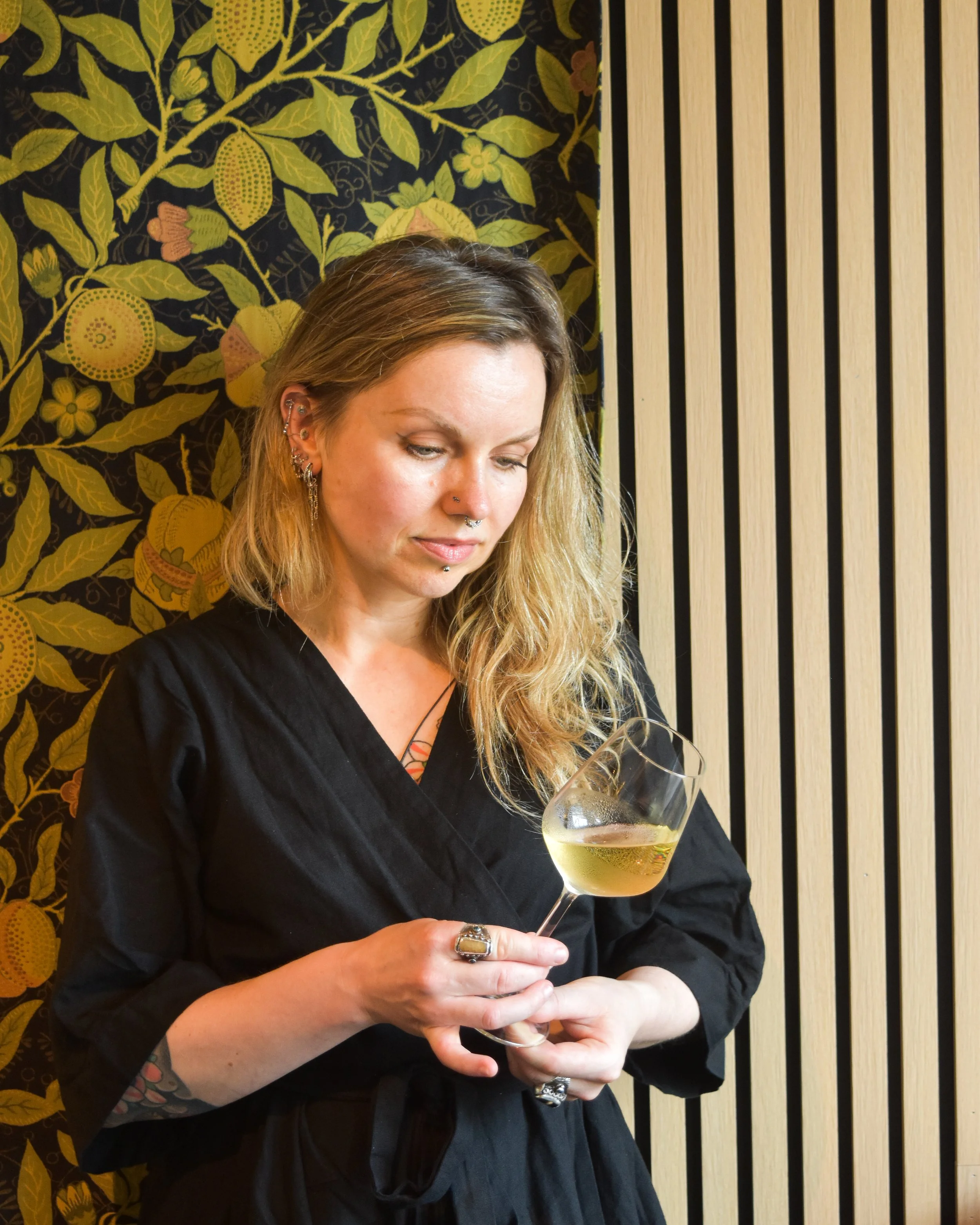Anna Patrowicz on Storytelling, Palestinian Terroir, and the Art of Sommellerie
In Conversation with Tom Owtram
Few sommeliers weave history, culture, and taste together quite like Anna Patrowicz. From her beginnings in the South of France, where curiosity for wine first took hold, to her role today at Akub in London, Anna’s journey has been guided by a fascination with storytelling and a desire to expand the language of wine.
At Akub - a restaurant that celebrates Palestinian cuisine under Chef Fadi Kattan - she curates a wine list that honours both familiar favourites and little-known native grapes from one of the world’s oldest winemaking regions. Beyond the dining room, she is helping to amplify Palestinian terroir internationally through her work with Nabeeth, an importer and distributor of Palestinian wines in the UK.
In this conversation, Anna reflects on her path into wine, the art of pairing, and what it means to represent a terroir whose history is both ancient and contested.
A journey into wine
What first drew you to wine, and how did you find your way into the world of restaurants and sommellerie?
I was living in the South of France, working for a wine collector on his private yacht. At the time, I knew very little about wine, so I started reading everything I could. The more I tasted and learned, the more fascinated I became. That led me to study with WSET up to the Diploma.
For me, it’s the magic of stories, terroir, and the senses coming together to create an experience. That’s what makes sommellerie an art.
Wine and identity
At Akub, you’re working with a distinctly Palestinian menu. What does that open up for you as a sommelier?
Through Palestinian wines, I discovered histories that are often ignored or forgotten. Classic sommellerie tends to focus on Europe’s famous terroirs and the so-called “new world”, but the story of winemaking in Palestine goes back millennia - from the first grapes planted around 9500 BC in Jericho, to the discovery of distillation in Baghdad in the 9th century.
My work extends beyond wine to cocktails and non-alcoholic drinks, using local ingredients such as sumac, zaatar, fenugreek, and mastica. This has expanded my palate and reshaped how I think about flavour.
Curating with context
How do you balance familiarity with discovery when building the wine list at Akub?
I want to give space and representation to the full range of Palestinian producers. Some, like Jascala and Ashkar in Galilee, work mainly with international grape varieties, which feel familiar to guests but still reflect a unique terroir.
Others, like Taybeh and Cremisan in the West Bank, produce wines from native grapes such as Beitouni, Zeini, and Dabouki. Introducing guests to these grapes is always a moment of discovery - they taste something both rooted in history and entirely new to them.
Emotion, memory, and pairing
You’ve described wine as a journey of emotion, memory, and craftsmanship. What does that mean in practice when guiding a guest?
Wine and drinks in general connect us through the senses to a place and its people. Add storytelling, and it becomes unforgettable. We humans are nostalgic creatures, always seeking fragments of identity in the past, and wine can offer that connection.
At Akub, pairing also means challenging expectations. For example, dishes with laban jameed (a salted yoghurt) or the tomato, dill, and chilli sauce of the zibdiyeh often surprise guests. When paired with Palestinian wines, it feels natural - especially when they learn about the region’s ancient winemaking traditions.
Palestinian terroir on the rise
What excites you about Palestinian terroir and introducing it to guests?
Palestinian wine has a history that is little known to the public, and it’s exciting to be part of sharing it. At Akub and in pop-ups with Chef Fadi, we highlight these wines, and through Nabeeth, we’ve begun importing and distributing them in the UK.
Being part of this movement - giving Palestinian terroir visibility and recognition - is both humbling and motivating.
Producers and grapes to watch
Are there particular wines or producers you’re most excited about right now?
I’m enjoying everything we’re offering from Jascala, Ashkar, and Taybeh - each with a distinct voice. I’m also bringing in wines from Cremisan, especially their native grape range: Dabouki and Hamdani-Jandali for white, and Baladi for red.
Until now, we’ve had Taybeh’s Zeini and Bitouni, both native varieties. Tasting something uncharted, something new to me, is always exciting - and I think guests feel that too.
The art of pairing
Pairing is both technical and intuitive. What’s your process?
There are classic rules to follow, but intuition is just as important. Texture and temperature are often overlooked, yet they can transform a pairing. And wine is never static - aromas and flavours evolve as the meal unfolds. That’s something I always keep in mind.
On connection and hospitality
What do you enjoy most about the interaction between sommelier and guest?
Every interaction is unique. It might be technical, or it might be about sharing the story of a winemaker. Listening is key - understanding what a guest is looking for and then adding something memorable to their experience.
Sometimes I joke that my Sociology degree has been the best training for this role. People are endlessly interesting.
Looking ahead
What are you curious to explore next in the world of wine?
My hope is for Palestinian winemaking to continue focusing on native grape varieties. There is still so much to discover, but the reality is difficult: the land, the livelihoods, even the very existence of Palestinian growers are under constant threat.
Wine requires patience and time - and right now, time feels fragile. That uncertainty shapes every conversation I have with winemakers there.


